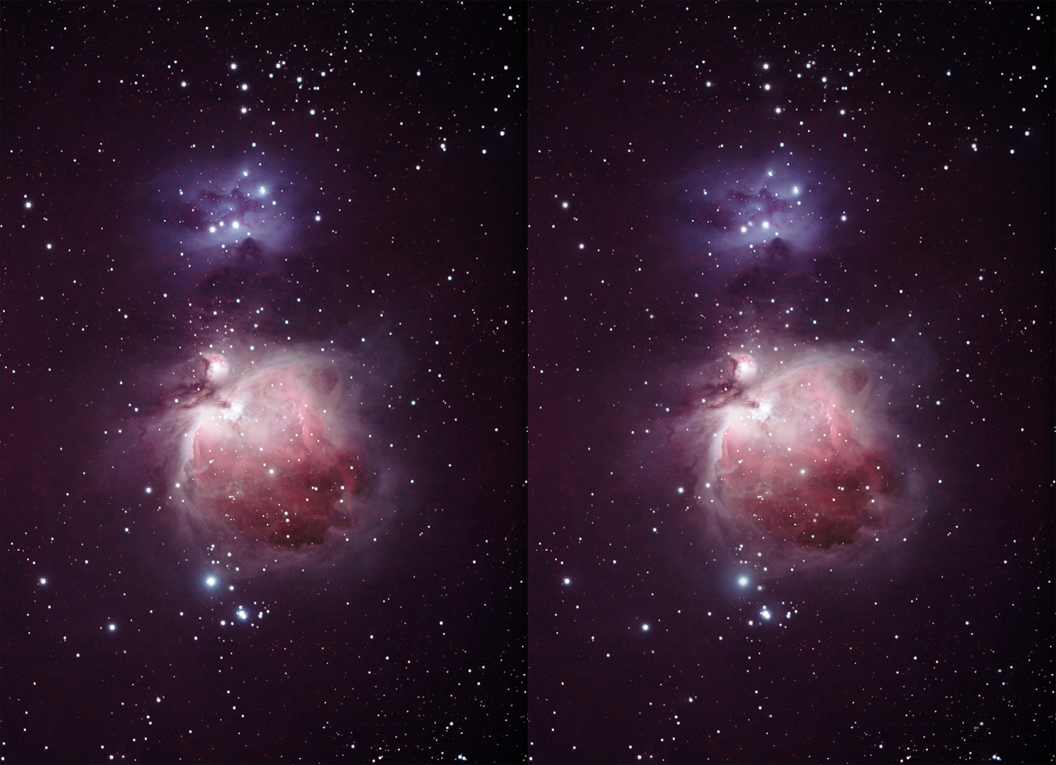The Great Orion Nebula (M42) in 3 dimensions
(please see below for viewing instructions)
Please note: I found that viewing this in
3-D may cause headache, nausea, and/or eye discomfort. Please do
not view if you are prone to these problems!
Description and Viewing Instructions:
This is a 3-D version of my previous shot of M42 and NGC 1977.
The left panel is the original shot, rotated 90 degrees.
The right panel is distorted by selectively moving
certain stars
or nebula regions slightly to the right or left (to bring them into the
foreground or background, respectively) in Adobe Photoshop. In
order to view, you must stare at the center, relax your eyes, allow
them to become cross-eyed, until you see the combined image appear.
It takes some practice, but the effect is impressive. This
is best viewed with at least 1152 x 864 screen resolution.
Background and comments:
The inspiration for this comes from an article in
Sky and Telescope (December 2003), which featured the 3-D work of Akira Inaka.
Mr. Inaka's beautiful 3-D
renditions were created by using distance data from the Yale Bright
Star Catalog, which allowed him to determine the amount of shift needed
to create an accurate
illusion of distance. Unlike Mr. Inaka's work, I have used
artistic
license in creating my 3-D version of M42, generally selecting brighter
stars
and peripheral regions of the nebula for the foreground (i.e., these
were
shifted slightly to the right in varying degrees). I also chose
fainter
stars for the background (by shifting them to the left). Although
this
is not scientifically correct, it captures a quality of deep sky
objects that we all know is present (3-dimensions), but is lost in our
typical 2-D renditions. I hope that you enjoy it!
Please
note: Graphics on this website may not be reproduced without
author permission.
Back to Nebulae
Home
